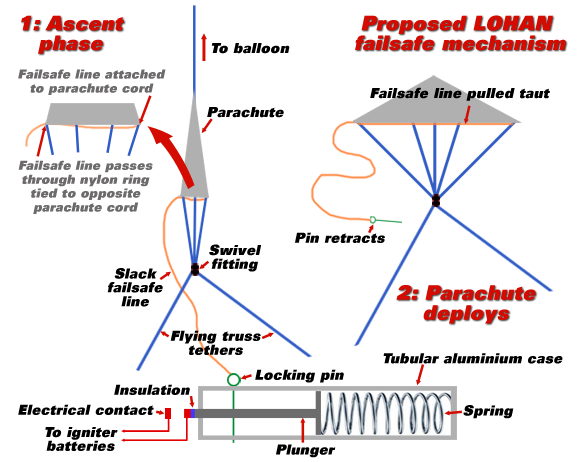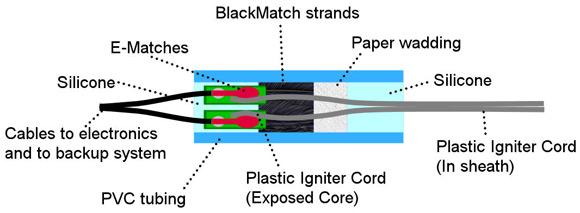This article is more than 1 year old
LOHAN cranks up old-school clockwork failsafe
Rocket motor ignition back-up gets the tick-tock treatment
We're obliged to Low Orbit Helium Assisted Navigator (LOHAN) fans for answering our call for suggestions as to just how a back-up ignition system for our Vulture 2 spaceplane's rocket motor might work.
 Our primary system is the Special Project Electronic Altitude Release System (SPEARS) control board, but we want a purely mechanical standby, just in case SPEARS goes titsup.
Our primary system is the Special Project Electronic Altitude Release System (SPEARS) control board, but we want a purely mechanical standby, just in case SPEARS goes titsup.
A "last-resort" option is something which works at or after balloon burst, such as our idea of using the opening of the payload parachute. It's a high-risk strategy, since there's not much air at altitude, and god alone knows just how the payload will behave as it tumbles through the stratosphere until the parachute deploys.
It does, though, have the advantage of being splendidly simple, as our original cunning plan graphic demonstrates:
In reality, we probably wouldn't even need the complex tube/spring/plunger assembly; an strip of insulation between two spring-loaded contacts would probably do the job.
With this in mind, we though we'd unfurl LOHAN's payload parachute - actually a rocket recovery model - and give the basic idea a spin. Here's the parachute laid out flat...
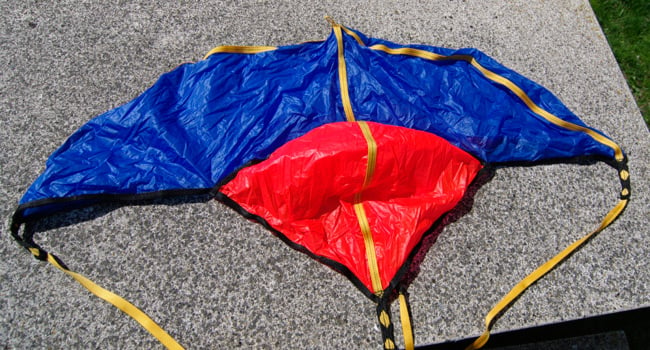
...and here's our test rig:
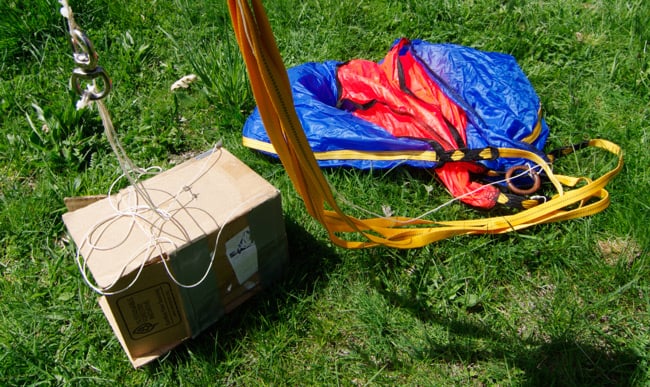
What we've got is the "failsafe line" attached to one parachute strap just under the canopy, passing though a ring tied to the opposite strap, then the swivel between the payload tathers and the 'chute straps, and ultimately tied to a simple steel wire pin stuck into the top of a cardboard box payload.
Here's the failsafe line at the parachute end. Note that in the best traditional of garden-shed boffinry, we used a wooden curtain ring that happened to by lying around:
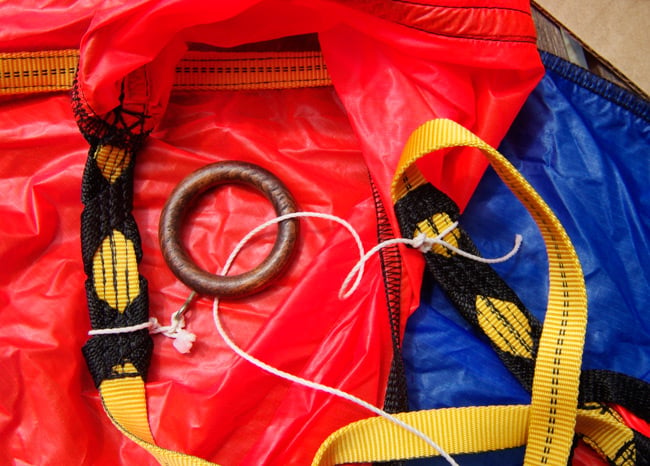
The failsafe line then passes through the top of the swivel. It doesn't necessarily need to pass through the swivel at all, but we thought this was the best way of avoiding it gradually winding round either the payload tethers or parachute straps during the ascent:
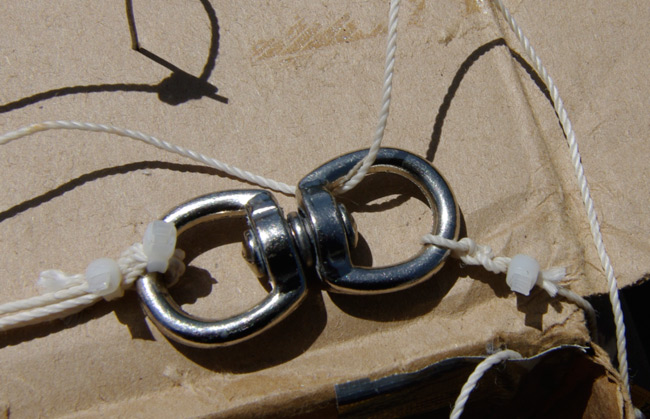
We'll have more on the matter of twisting in due course. In the meantime, enjoy our hi-tech test pin mechanism:
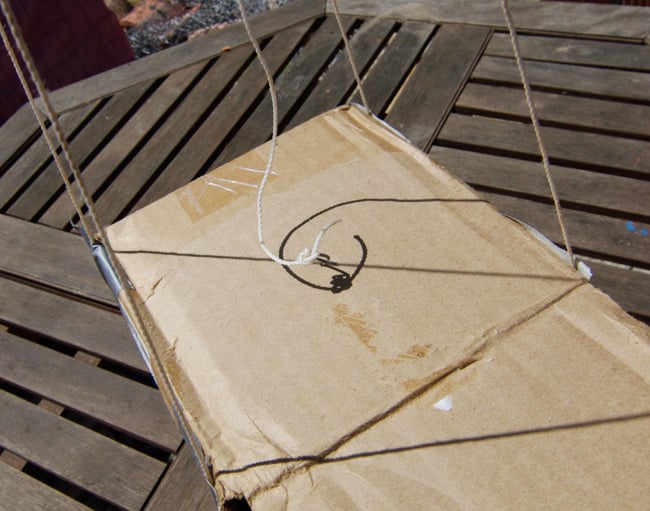
We calculated the slack in the line to be sufficient to avoid premature tugging, but not enough that the pin wouldn't get a sharp pull when the parachute opens.
So, with a bit of extra weight in the box to simulate the mass of our fantastical flying truss, we chucked the thing off a high building to see how it works.
Well, it does work, but there certainly is an issue with the line getting wound up as the swivel, er, swivels, as many of you predicted. The solution may be a bearing, like this one:

We reckon we can attach the flying truss to the outside of the bearing, and the parachute lines to the inside, with the failsafe line passing through the hole in the middle. You get the idea.
However, that will have to wait, since our immediate priority is a pre-balloon-burst back-up for the SPEARS board, due to fly for the second time on 13 July.
The test flight is intended to ensure SPEARS will fire Rob Eastwood's custom igniter, which has two inputs connected to separate E-Matches:
So, SPEARS is using one connection, and the other will be hooked up to a decidedly old-school piece of tech, viz: a clockwork oven timer:
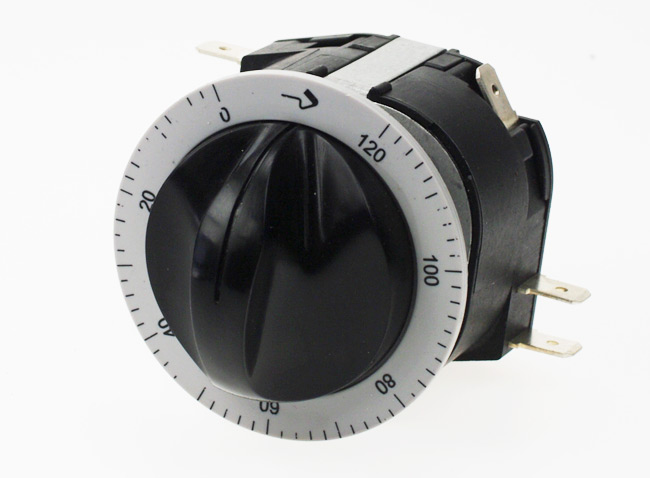
Yes indeed, in the best tradition of garden shed boffinry, we took this entirely mechanical device, rigged it to a 9V battery holder and "pull to change" safety switch...
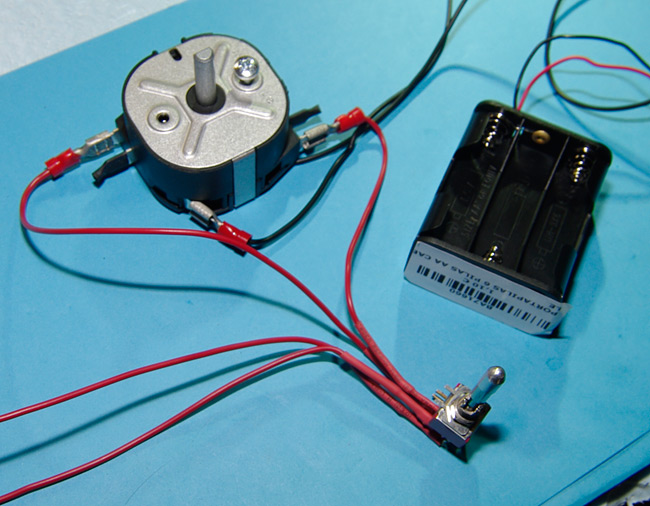
...stuck the whole thing in a plastic box...
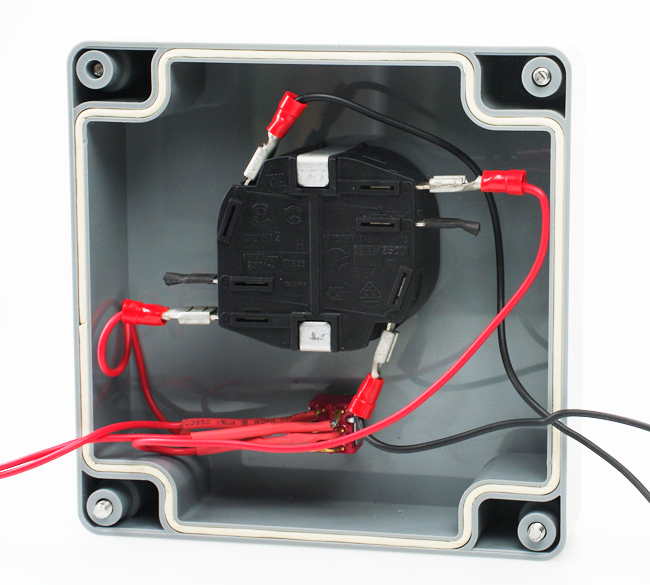
...and added some fetching graphics:
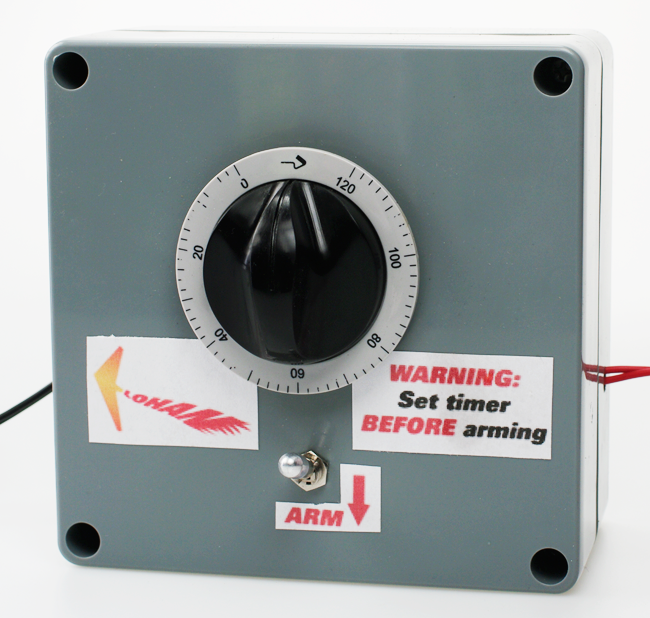
The safety switch is required because the timer switch is a double pole, double throw unit, and the output side is live until the timer is set. Accordingly, to avoid premature ignition, it's necessary to set the timer running and then "arm" the unit.
Regarding accuracy, it's pretty good. Here are the results:
- Timer set at 20 minutes: 20min 10s - 19min 52s - 20min 53s - 20min 46s - 20min 0s
- 40 minutes: 40min 25s - 39min 57s - 41min 14s - 40min 42s - 40min 06s
- 80 minutes: 81min 14s - 81min 15s - 81min 40s - 81min 50s - 81min 07s
- 120 minutes: 121min 26s - 121min 15s - 121min 25s - 121min 23s - 121min 22s
Since we can predict the balloon rate of ascent pretty accurately, we'll be able to set the timer to fire the igniter just after SPEARS should have done it anyway. And voilà - we have our first failsafe system ready to roll.
The timer can, of course, be connected to the same battery pack SPEARS will use to fire the igniter, so we won't need extra batteries. Our one concern is that it might freeze up at altitude, so we're mulling some preventative measures to address that.
We can be certain of one thing, though, it works at ground level. Works like a charm, in fact:
®
Further LOHAN resources:
- New to LOHAN? Try this mission summary for enlightenment.
- You can find full LOHAN coverage right here.
- Join the expert LOHAN debate down at Reg forums.
- All the LOHAN and Paper Aircraft Released Into Space (PARIS) vids live on YouTube.
- For our SPB photo archive, proceed directly to Flickr.
- We sometimes indulge in light consensual tweeting, as you can see here.
